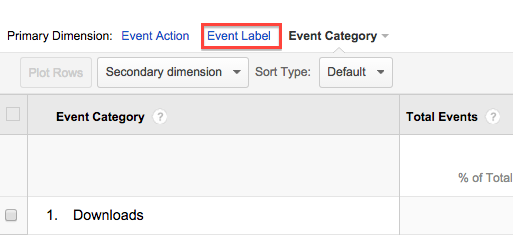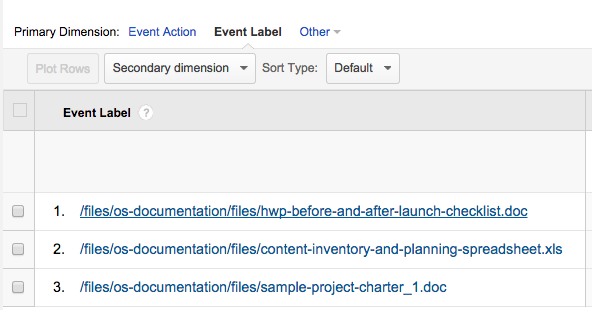The OpenScholar platform fully supports Google Analytics, which allows you to keep track of website visits, demographic information, most popular pages, and many other website metrics. Understanding your website analytics is crucial in ensuring that your website goals are successful. It can also be valuable tool for monitoring and revising specific content strategies. In addition, Google Analytics gives you access to a robust selection of reports which can be emailed to you on a scheduled basis.
Getting Started with Google Analytics
First, you will need a Google account. Follow these steps to set up a new Google account if you do not currently have one.
When you're ready, proceed to sign up for Google Analytics with your Google account and create an account in Google Analytics 4.

Learn how to get started using Google Analytics and check out their Analytics Help Center as well as the Analytics Academy.
Google Analytics 4 Property:
Google Analytics 4 property provides a measurement ID that starts with G followed by a dash and 10 characters like this - G--XXXXXXXXXX.
How to create a property and get its measurement ID of the property:
1. Go to ADMIN and Click + Create Property
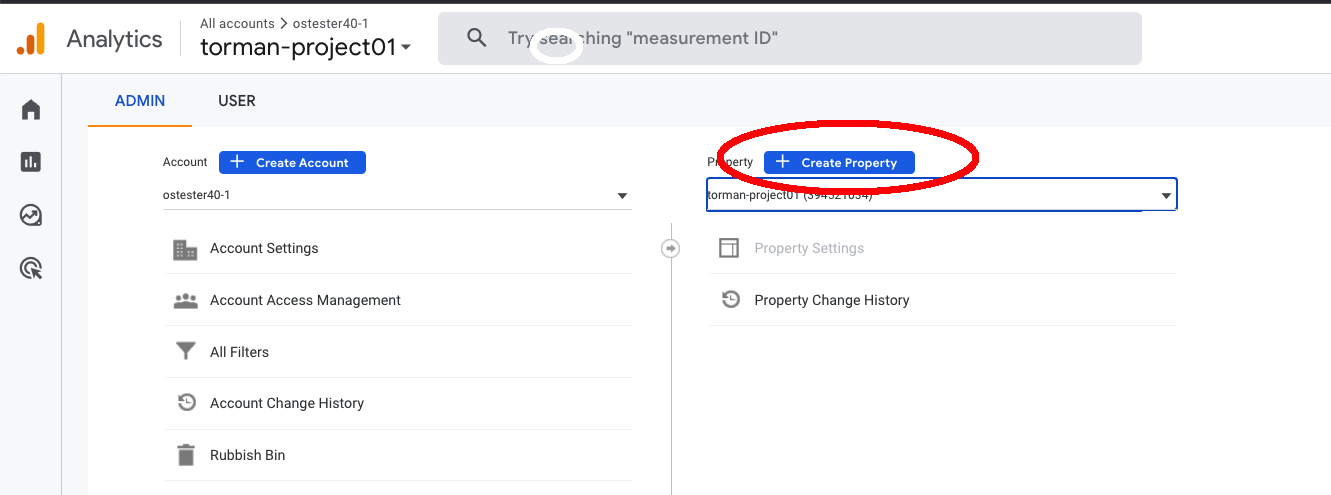
2. Enter all required fields in Create a property form and click Next
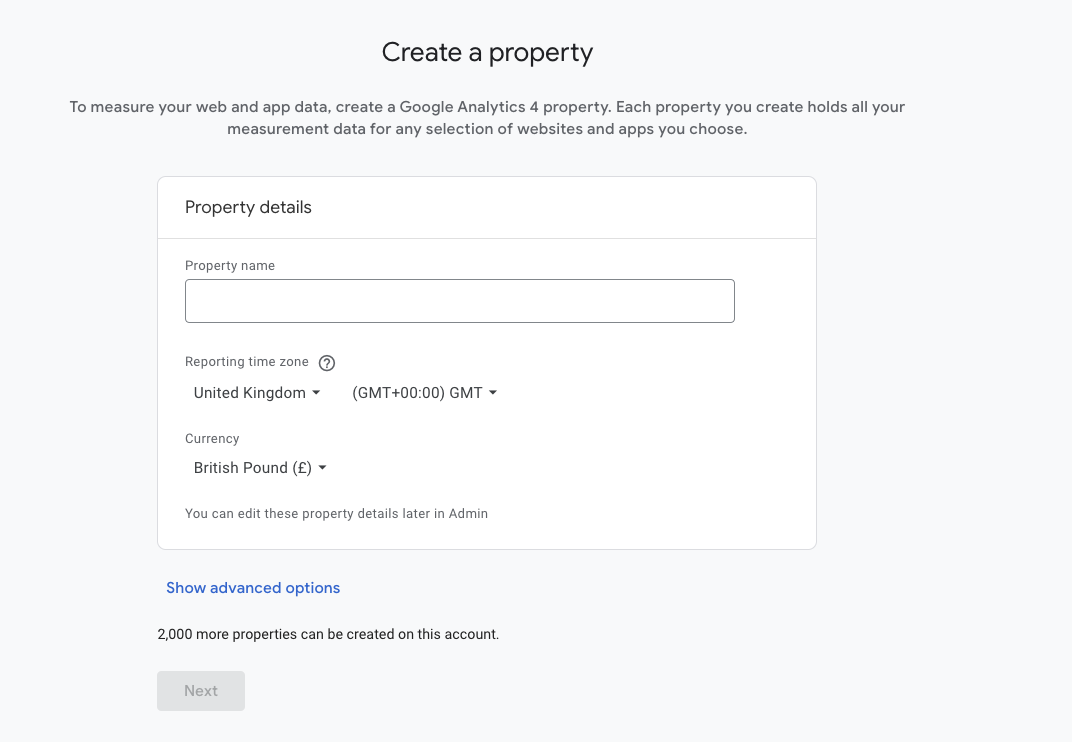
3. Answer all questions on Describe your business form and click Next
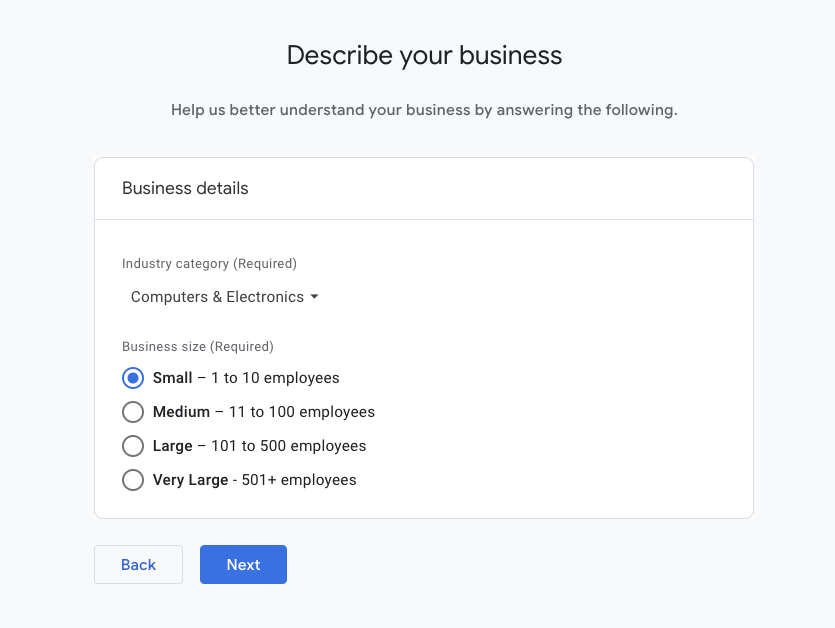
4. Answer all questions on Choose your business objectives form and click Create
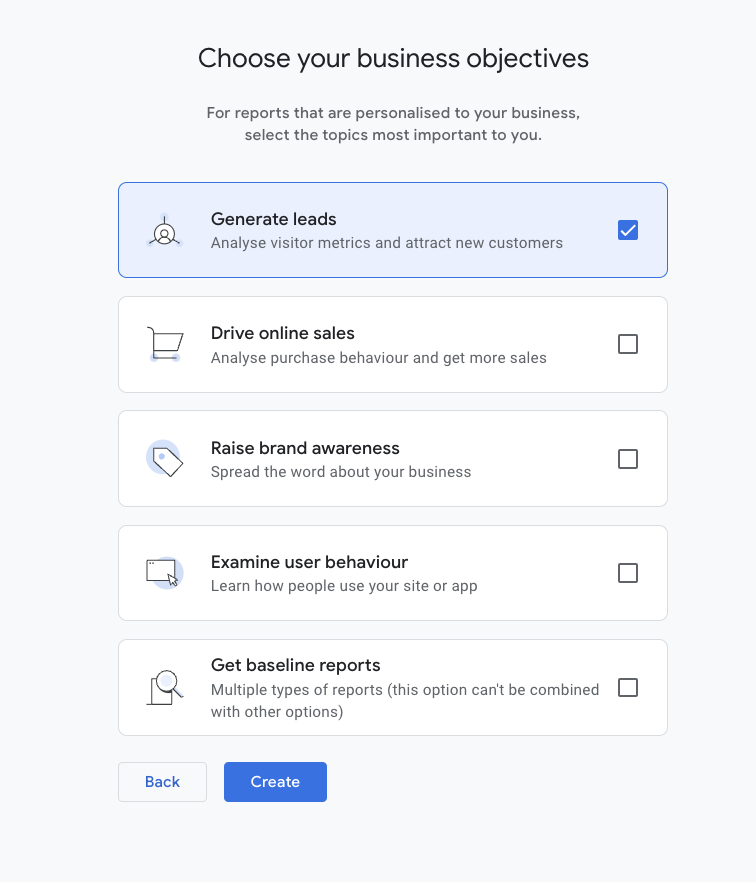
5. Set up data stream for your website
Note: you should be able to find the measurement ID in Web stream details popup like this one below.
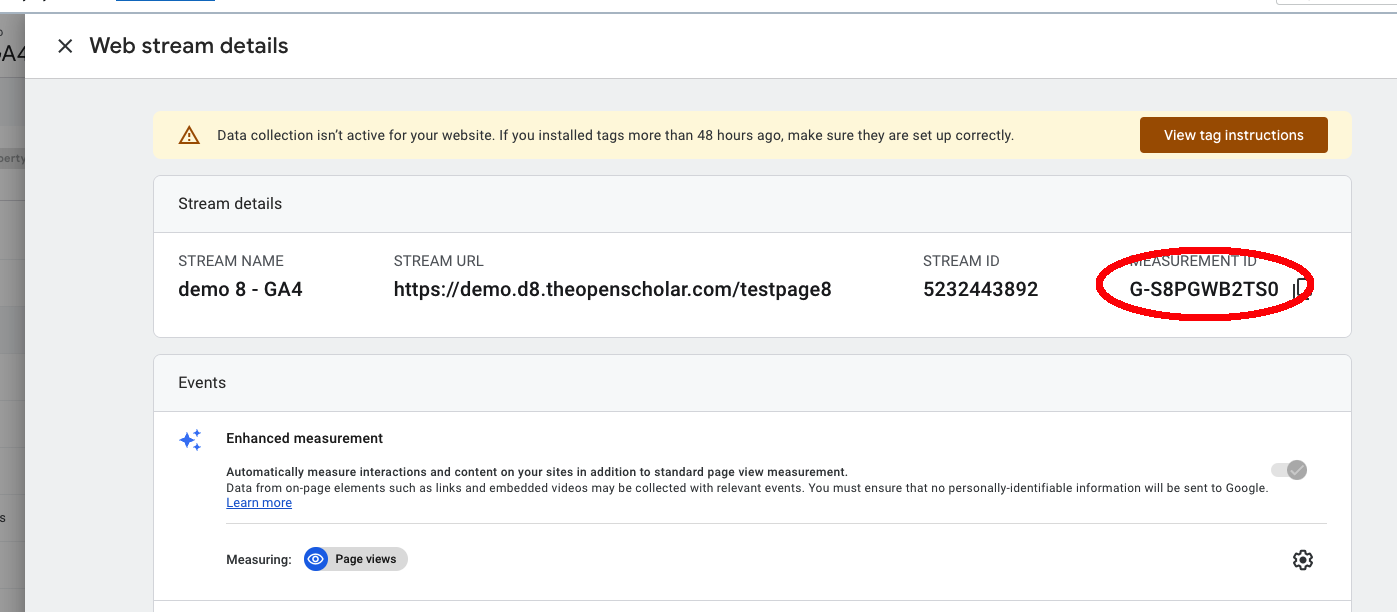
Adding Google Analytics 4 measurement ID to Your Website
1. Go to your Openscholar site, navigate to your Settings area
2. Select Global Settings
3. Select Google Tag Manager and enter your Google Analytics 4 measurement ID into the field (Now, Google Tag Manager settings page will handle both Google Analytics 4 Measurement ID and GTM Containter ID).
4. Click the Save configuration button
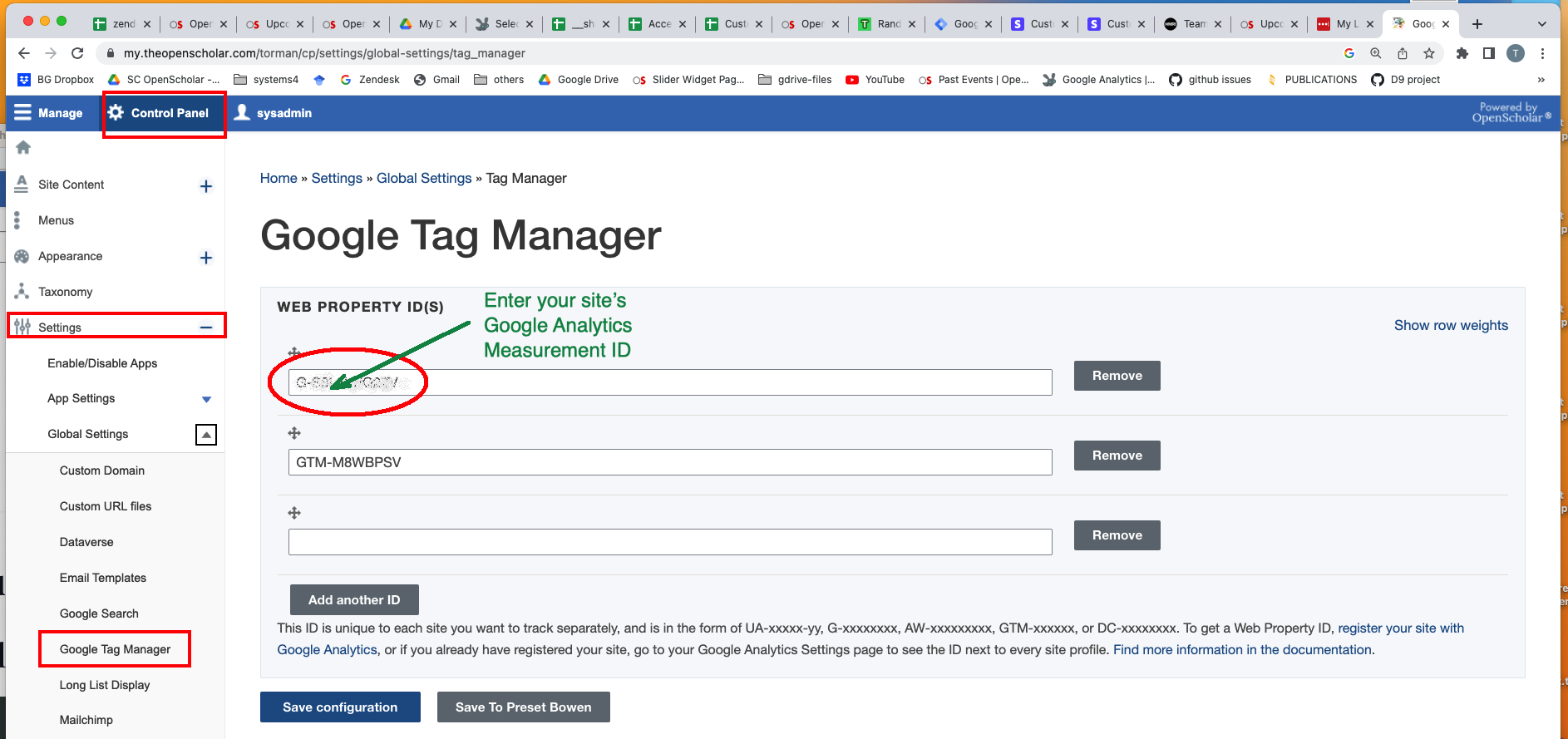
Once this is saved, Google Analytics will automatically begin collecting data for your website. You'll need to log-in to your Google Analytics dashboard to view results.
Tracking Searches on Your Website
When setting up a Google Analytics profile, you can opt to track search terms. Reviewing the most frequent search terms on your website can be an effective way of gaining insight into what your website visitors are looking for.
In your Google Analytics account, go to Admin > View Settings, and switch the Site Search Settings to "on."
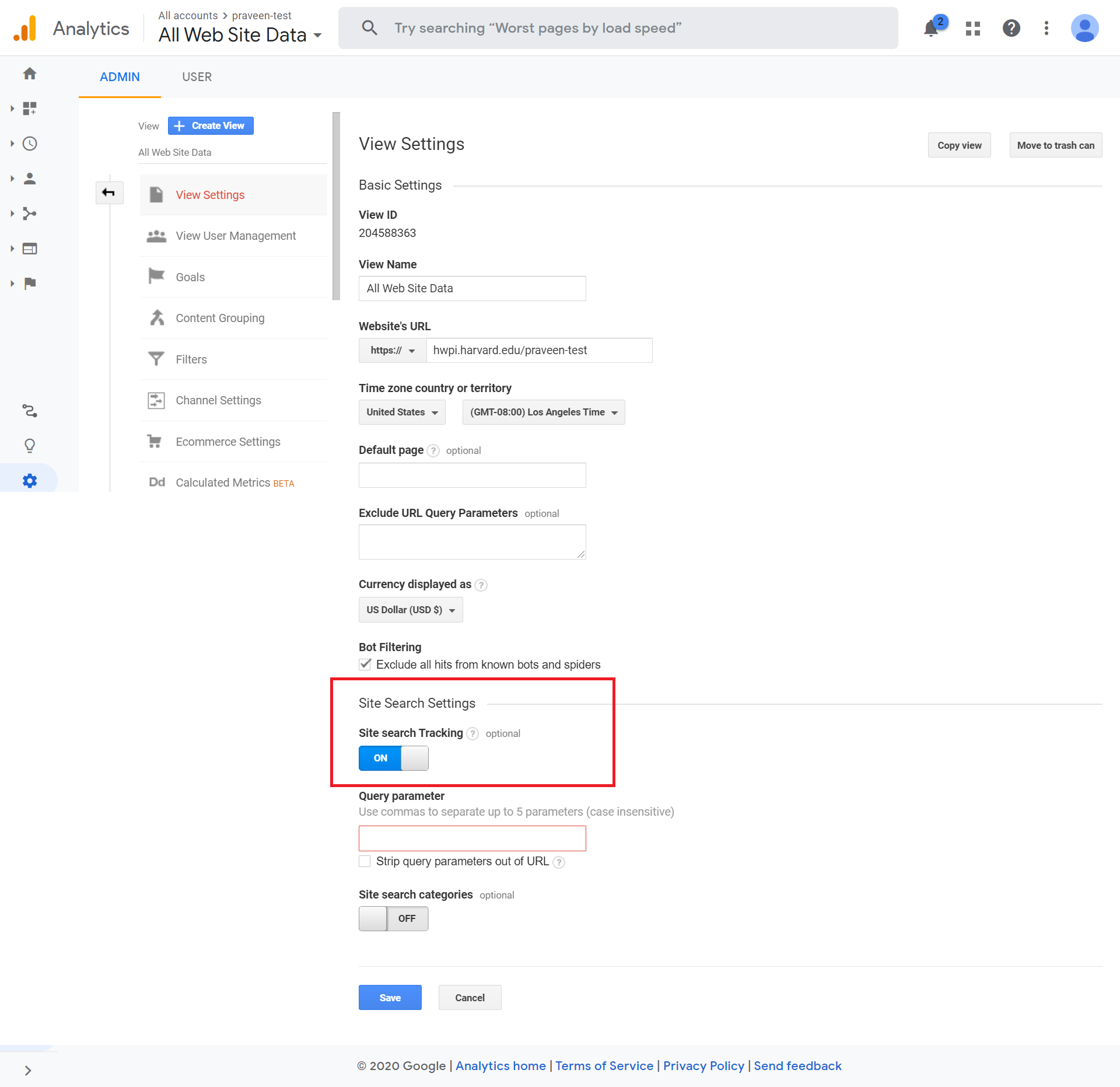
With the "Site search Tracking" option is enabled, you can access search reports by going to Behavior > Site Search
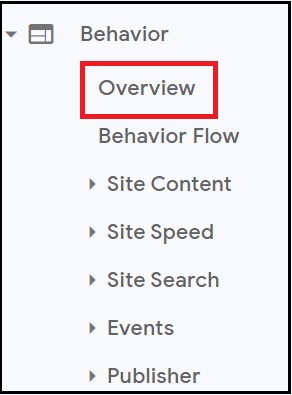
Event Tracking
Click events for links and files are automatically tracked within OpenScholar. You don't need to configure anything extra to enable Event tracking. However you cannot modify how the information is being collected.
You can find the Events information within Google Analytics by going to Behavior > Events
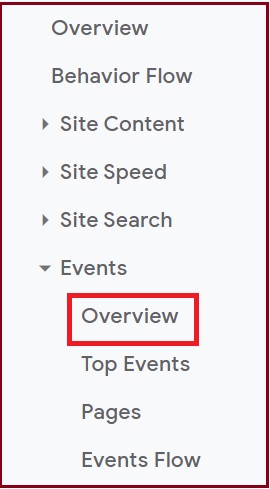
Event tracking is organized into three areas, Category, Action and Label:
Category
Groups click events into the following categories:
- Outbound Links - Clicks on links to external sources or websites
- Secondary Nav - Clicks on links within the OpenScholar secondary navigation menu
- Downloads - Clicks on links to files within the OpenScholar site
- Primary Nav - Clicks on on links within the OpenScholar primary navigation menu
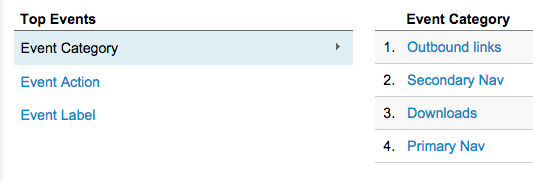
Action
The specific type of link/file that was clicked, such as a PDF, DOC, XLS, etc. (Note: Click is a non-file link)

Label
Contains the full path the link or file

Tip: You can filter by multiple categories to get a list of specific links. For example, to see a list of downloads by file, you can click "Downloads", then filter by "Event Label":
